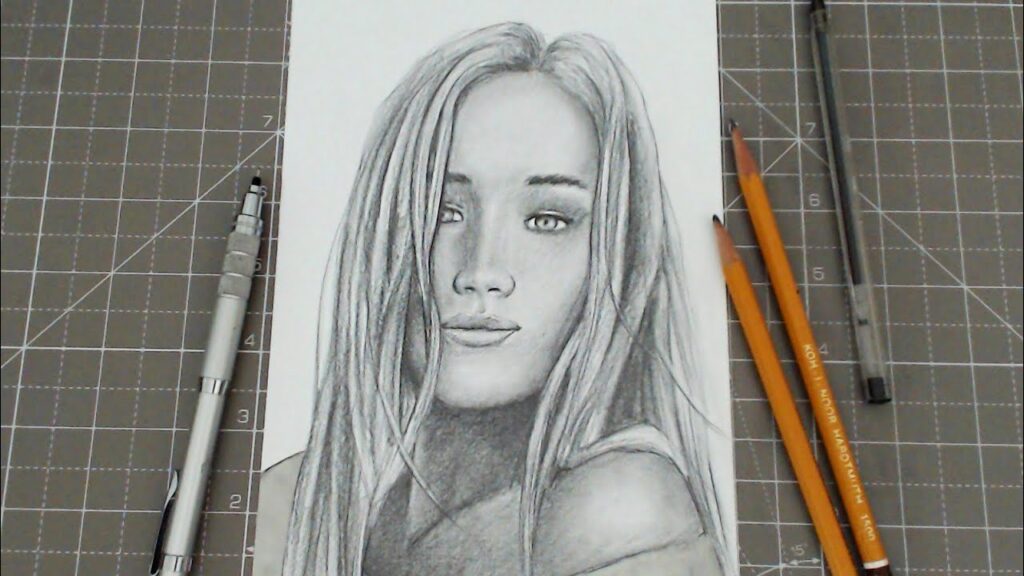How to Draw a Person: A Comprehensive Guide
Introduction
Drawing the human figure is a fundamental skill for any aspiring artist. Whether you’re interested in portraiture, character design, or simply want to improve your observational drawing abilities, learning how to accurately depict the human form is essential. In this comprehensive guide, we’ll explore the key principles and techniques for drawing a person, from basic proportions to advanced shading and rendering methods.
Understanding Human Anatomy
Before you begin drawing the human figure, it’s important to have a basic understanding of human anatomy. Knowing the underlying structure of the body, including the bones and muscles, will help you create more accurate and realistic drawings.The human skeleton consists of 206 bones, with the skull, ribcage, and pelvis being the most prominent. The muscles, on the other hand, are responsible for movement and can be divided into two main categories: skeletal muscles and smooth muscles. Understanding how these muscles interact with the skeleton is crucial for creating dynamic and expressive drawings.
Basic Proportions
One of the most important aspects of drawing a person is understanding the basic proportions of the human body. The average adult human is approximately 7.5 to 8 heads tall, with the head being the basic unit of measurement. This means that if you divide the body into 8 equal parts, each part will be roughly the size of the head.To begin drawing a person, start with a simple stick figure. Divide the stick figure into 8 equal parts, using the head as the basic unit of measurement. This will give you a rough idea of where the major body parts should be placed, such as the shoulders, waist, and hips.Once you have the basic proportions in place, you can begin adding volume to the figure. Use simple shapes, such as cylinders and spheres, to represent the major body parts. This will help you create a more three-dimensional drawing and make it easier to add details later on.
Posture and Movement
One of the keys to creating dynamic and engaging drawings is understanding how the body moves and changes in different poses. When drawing a person, it’s important to consider their posture and the way they carry themselves.To create a sense of movement and energy in your drawings, experiment with different poses and angles. Try drawing the figure from different perspectives, such as above, below, or from the side. Pay attention to the way the body shifts and twists in different poses, and how the weight is distributed.
Facial Features and Expression
The face is one of the most important and expressive parts of the human body. When drawing a person, it’s important to pay close attention to the facial features and how they contribute to the overall expression of the figure.Start by drawing the basic shape of the head, then add the major features such as the eyes, nose, and mouth. Pay attention to the proportions and placement of these features, as they can greatly impact the overall likeness of the drawing.To create a more expressive drawing, experiment with different facial expressions. Try drawing the figure with a range of emotions, from happy and excited to sad and pensive. Pay attention to the way the features change and shift in different expressions, and how the overall posture and body language contribute to the overall mood of the drawing.
Shading and Rendering
Once you have the basic structure and proportions of the figure in place, it’s time to start adding shading and rendering. Shading is the process of adding value and depth to a drawing, while rendering refers to the overall finish and level of detail.When shading a figure, start with the basic forms and work your way towards the details. Pay attention to the way light hits the body, and how it creates shadows and highlights. Use a range of values, from dark to light, to create a sense of depth and volume.To create a more realistic and detailed drawing, experiment with different rendering techniques. Try using cross-hatching, stippling, or blending to create different textures and effects. Pay attention to the way the skin, hair, and clothing interact with the light, and how they contribute to the overall look and feel of the drawing.
Practice and Experimentation
Drawing the human figure is a skill that takes time and practice to develop. The more you draw, the more comfortable and confident you’ll become with the process. Experiment with different materials, such as pencils, charcoal, or markers, to find the ones that work best for you.Don’t be afraid to make mistakes or try new things. Drawing is a process of exploration and discovery, and every drawing you create is an opportunity to learn and grow as an artist. Keep a sketchbook with you at all times, and take the time to draw from life whenever you can. Observe the people around you, and try to capture their unique features and expressions in your drawings.
Conclusion
Drawing the human figure is a challenging but rewarding skill to develop as an artist. By understanding the basic principles of human anatomy, proportions, and movement, you can create more accurate and expressive drawings. With practice and experimentation, you’ll be able to develop your own unique style and approach to figure drawing.Remember, drawing is a journey, not a destination. Keep exploring, keep learning, and keep creating. With dedication and passion, you can develop your skills and create beautiful, meaningful drawings that capture the essence of the human form.
FAQs
Q: What are the basic proportions of the human body?
A: The average adult human is approximately 7.5 to 8 heads tall, with the head being the basic unit of measurement.
Q: How do I start drawing a person?
A: Begin with a simple stick figure, dividing it into 8 equal parts using the head as the basic unit of measurement. Then, add volume to the figure using simple shapes such as cylinders and spheres.
Q: What is the importance of understanding human anatomy?
A: Knowing the underlying structure of the body, including the bones and muscles, will help you create more accurate and realistic drawings.
Q: How do I create a sense of movement and energy in my drawings?
A: Experiment with different poses and angles, and pay attention to the way the body shifts and twists in different positions.
Q: What are some tips for drawing facial features and expressions?
A: Start by drawing the basic shape of the head, then add the major features such as the eyes, nose, and mouth. Pay attention to the proportions and placement of these features, and experiment with different facial expressions.
Q: How do I add shading and rendering to my drawings?
A: Start with the basic forms and work your way towards the details. Pay attention to the way light hits the body, and use a range of values to create a sense of depth and volume. Experiment with different rendering techniques such as cross-hatching, stippling, or blending.
Q: How do I improve my figure drawing skills?
A: Practice regularly, keep a sketchbook with you at all times, and draw from life whenever you can. Observe the people around you, and try to capture their unique features and expressions in your drawings. Don’t be afraid to make mistakes or try new things.
Table of Information
| Characteristic | Description |
|---|---|
| Human Anatomy | The human skeleton consists of 206 bones, with the skull, ribcage, and pelvis being the most prominent. The muscles are responsible for movement and can be divided into skeletal muscles and smooth muscles. |
| Basic Proportions | The average adult human is approximately 7.5 to 8 heads tall, with the head being the basic unit of measurement. |
| Posture and Movement | Consider the body’s posture and how it carries itself. Draw the figure from different perspectives to create a sense of movement and energy. |
| Facial Features and Expression | Start by drawing the basic shape of the head, then add the major features such as the eyes, nose, and mouth. Experiment with different facial expressions. |
| Shading and Rendering | Start with the basic forms and work your way towards the details. Pay attention to the way light hits the body, and use a range of values to create a sense of depth and volume. Experiment with different rendering techniques. |
| Practice and Experimentation | Drawing is a skill that takes time and practice to develop. Keep a sketchbook with you at all times, draw from life whenever you can, and don’t be afraid to make mistakes or try new things. |
Additional Resource



